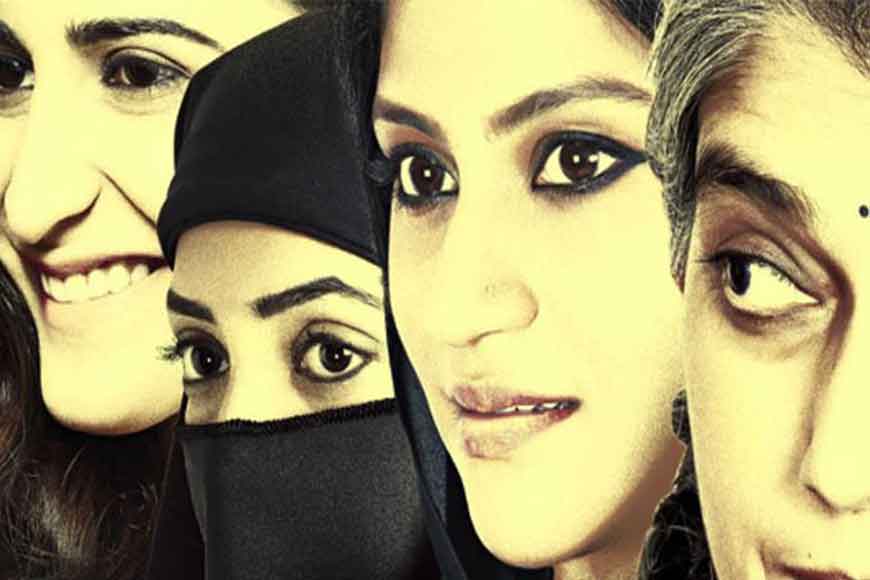Teaching Lipstick Feminism

Indrani Ghosh is a post-graduate in English from Visva Bharati University. Presently she is working as English teacher with Vidyanjali High School, Bhowanipore
While watching Alankrita Shrivastava’s Lipstick Under My Burkha,one gets transported to 1963, the year when Satyajit Ray’s Mahanagarwas released. It was based on NarendranathMitra’s short story,Abataranika,which was later expanded into a novel named Mahanagar. The protagonist of the film, Arati Mazumdar is forced to take up a job to improve her family’s financial condition. Arati’s Anglo-Indian colleague and friend, Edith, gifts her a lipstick.
Way back in the ’60s, a lower middle-class Bengali married woman could hardly think of stepping out of the security of her home and take up a job, work independently and even decide to resign, when she thinks it is the right time to leave.Mahanagar’sAratiwas the flag-bearer of feminism in her own way. When she applies the lipstick given to her by Edith, it only gives impetus to her journey.
However, in those days when an independent-minded intelligent woman living in a metropolitan city is ridiculed by her husband for using lipstick, she feels insulted and throws away her friend’s gift in total disdain. Over decades of scuffle and antagonism, today it seems, women in India somehow established their ‘lipstick rights.’
This is evident when the protagonist Usha,in Lipstick Under My Burka,is humiliated and thrown out of her house. She collects a few of her belongings including her clothes and a couple of porn magazine photographs to join Rehana, Leela and Shirin. She dares to dream. She dreams of a ‘lipstick liberation,’ of femininity in all its splendor and beauty.

The movie has some outstanding scenes. Four women sit closely huddled in a crammed roomamid the din of crackers and Diwali celebrations. They are preoccupied, joining pieces of torn porn magazine covers and each time one of them succeeds in completing a photograph, the others peer and then burst into unbridled laughter and mirth, cheering the way one does after solving a complex jigsaw puzzle. They are all named Rosy, identical in their zest for life. But each of them is a separate individual and requires identification. So,Alankrita brands them with different names, sets their age apart and weaves four independent tales.
Lipstick Feminism and Third Wave: In the ’70s, feminism was marked by radical activities and a demand for rectifying social and legal inequalities and establishing equal rights for women in every sphere of life. Post ’70s, activism was given a more concrete form, where specific problems were addressed and the quest for effective solutions began. This quest gained momentum and came to be known as ‘Third Wave Feminism,’that began to emerge in the 1980s and 1990s.Lipstick feminism is a branch of this third wave movement.
Feminist leader Rebecca Walker first used the expression ‘Third Wave Feminism’ in an article she wrote in 1992 and specified how and where it differed from second wave feminism. Third wave feminism expands its horizon of activism and establishes a woman’s autonomy over herself, her right to sexuality and propagates the concept of the queer. It also takes up societal issues like gender violence against women.
Since ages, the patriarchal society saw women who used lipstick, as prostitutes trying to attract men. The lipstick movement started as a primary form of protest, against this clichéd social idea. The lipstick was just a symbol and became an icon of protest, against pre-conceived notions of the society. A woman using makeup is not a sex symbol. She is not trying to allure men. Lipstick feminism supports the belief that it is possible to be a feminist, while displaying femininity. Rehana, Leela, Shirin and Usha – the four women in the film are symbols of the ongoing lipstick feminism movement.
Translation by: Tale Spin









